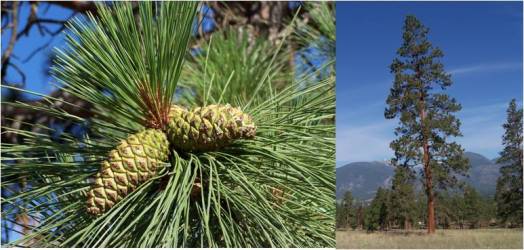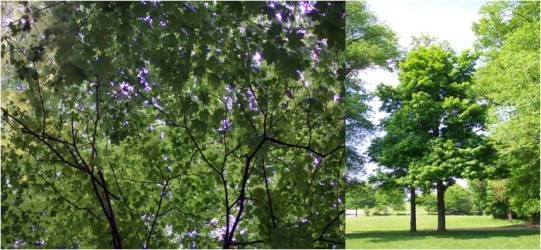Written by Peter Kolb, Montana State University
Tree species can be identified in many ways, including by visible and genetic attributes. As with all biological organisms, tree taxonomists use the Linnaean system to differentiate between unique tree lineages (kingdom – phylum – class – order – family – genus – species). Most plant taxonomy is based on reproductive structures and trees are no different, scientifically separated in the kingdom of plants into two evolutionary phylum called angiosperms (naked seed) and gymnosperms (enclosed seed).
Most people, however, find it easier to separate trees based on their more observable characteristics, such as leaves. Using this easily observable feature, trees can be separated into evergreens, those that keep their leaves for multiple years, or deciduous, those that drop their leaves every fall and grow new ones in the spring. Most evergreens are also in a subcategory of gymnosperms called conifers, or “cone-bearing trees,” which are also known for needlelike leaves (Figure 1). Most deciduous trees have broad leaves, produce flowers, and do not produce seeds in conelike structures (Figure 2). There are exceptions in both categories, such as live oak and holly trees that are broadleafed evergreens, and larch, or tamarack, and metasequoia that are conifers with deciduous needles.

Figure 1. An example of an evergreen ponderosa pine (needles, cones, and trees). Most pines hold onto their needles for three to five years, though when stressed may only keep 1- to 2-year-old needles. Such leaf form is an adaptation to hot and dry environments, where the long thin needles are more likely to stay the temperature of the ambient air rather than heat up by absorbing too much sunlight. The downside of such needle architecture is that these needles, designed to reflect sunlight and stay cool, will not absorb enough light in a shaded conditions to allow for adequate photosynthesis to occur. By growing in predominantly arid environments where other species are unable to grow, ponderosa pine avoids competition and shading from other trees. Photos courtesy of Peter Kolb, Montana State University.

Figure 2. The leaf and tree architecture of a broadleaf deciduous sugar maple tree. These trees’ broad, thin leaves are designed to absorb the maximum amount of sunlight available, which makes them able to grow in the shade of other tree species. By dropping their leaves every year when the temperature gets too cold, they avoid the cost of having to maintain leaves during less productive times. They can also shed their leaves early during drought stress. The disadvantage of such broad, deciduous leaves is that they can overheat in hot dry environment and suffer drought where low relative humidity results in excessive water loss. Photos courtesy of Peter Kolb, Montana State University.
Wherever trees naturally occur, the local native species have developed from common ancestors with specific genetically programmed morphological and physiological adaptations, often in the form of different leaf shapes and structures (Figure 3). These adaptations give them the ability to survive and be competitive against other species for the limited resources common to a given location and also makes them distinguishable from each other. Worldwide, there are estimated to be more than 100,000 tree species, most of which occur in tropical regions.

Figure 3. Different distinguishing leaf structures that are adaptations to specific environments. On the left is a western red cedar (Thuja plicata) that has scalelike needles that offer this evergreen conifer good light absorption for shaded environments. On the right is a branch from a western larch (Larix occidentalis) that grows deciduous needles in clumps of 15 or more. For this species, deciduous needles help it survive wildfires because the tree can survive even if the needles are scorched off. Photos courtesy of Peter Kolb, Montana State University.
For more on Tree Species:



